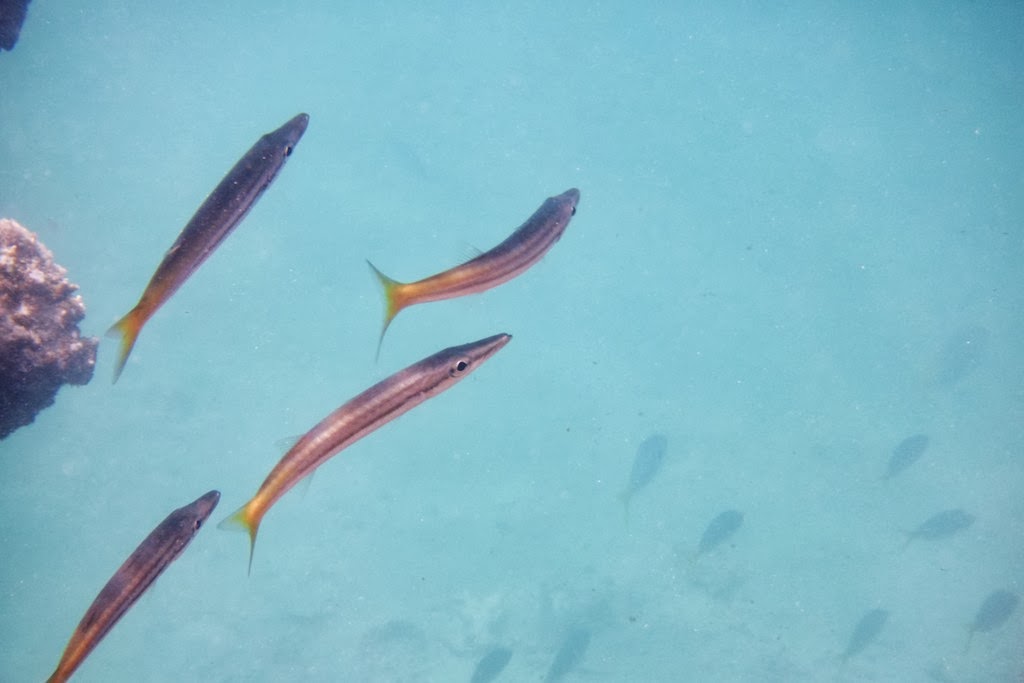Cyclone Hadi had everyone in the marina busy, tying down anything that could come loose, securing boats even securer, filling up empty berths with boats that were usually moored out in the bay etc etc.
When we were all done and ready for the excitement, Cyclone Hadi changed its course, went back out to sea and fizzled out.
So, we untied everything, and brought out the crystal again, did our last big shopping for the trip and set sail, looking for a few remnant gusts of wind from the receding cyclone.
Two days later, we anchored at Magnetic Island (just offshore from Townsville).
This was our first visit to Maggi. We did lots of walking. I was keen to test my new phone app which acted as a pedometer. Stuart (my son) had put me onto it. Not only did it count your steps (10,000 a day is supposed to be the optimum), but you could also keep an eye on how many steps your friends (competition) was taking.
 |
| Horseshoe Bay |
Magnetic Island has several small townships to cater for laid back locals as well as those seeking a few days away from the 'Big Smoke'.
The beach was enjoyed by both horses and riders at Horseshoe Bay (appropriately named).

So far, I hold my pedometer record for the walking we did at Maggi. We walked the dunes behind the bay, looking for whatever wildlife may have been lurking there.

Do wildflowers count as wildlife? I was careful not to get too close to the Wild Passionflower above as it is rumoured that they go for the throat.
You can see the little yellow fellow putting up a valiant battle with the bee. I left them to fight it out.
Click, click, click went our cameras.
We found lots and lots of butterflies. Usually, where there's a lot of butterflies, they all seem to be a predominant species, but here there were many. I was pretty happy to catch this blue spotted one which I have seen around Cairns but have been unable to catch its erratic behaviour. This one obligingly landed a few times which is quite uncharacteristic of them.
On we went till we had to double back so we could get around the back of this lagoon.
I was after a good score on the pedometer!
Maniacal laughter rang over the bushland as Blue-wing Kookaburras gave it all they had.

I felt as though I was being watched.
At the end of the beach was a nudist. He was being watched :)
We left Magnetic Island on an exceptionally calm day and had to motor all the way to Hinchinbrook Island. This wasn't such a bad thing as we wanted to stop at Zoe Bay on the exposed eastern side of the island. There were very few days of the year where you could get a calm anchorage here.

Ian and I let Scottie (the autopilot) earn his keep while we had fun trying to capture photos of the
Garfish which would skip their way over the water to flee the oncoming yacht.

It must have been dolphin's day out as we passed several pods that day. The calm conditions were ideal for them to hunt Garfish.
One of the attractions of Zoe Bay besides the long rainforest-clad bay itself, is a walking track which leads to a waterfall and swimming hole.
This walk is part of the Great Walk around Hinchinbrook which attracts people from all around the world and takes about 4 days to complete.

Ian takes the first dip in the clear waters while I take photos and make sure that the resident Jungle Perch are safe to swim with.

The backdrop of the mountains at Zoe Bay are reminiscent of New Zealand's South Island.
We were anchored on the other side of these mountains on our southward leg when we stayed in one of the mangrove estuaries and caught our unfortunate Mud Crab.
A full moon rises over Winkali as we enjoy a final walk on Zoe Bay at dusk. It was a magical night with a clear starry sky reflected in the calm mirror-like sea.
And so ends this adventure on Winkali.
Thanks for sharing our adventures with us
Ian and Petra xx




















































